The dirt that accumulates on the bottom of a pool is a significant health risk. It can cause skin infections and other health issues if not taken care of properly.
This is why it is important to take preventive measures to clean your pool. This article will provide you with some tips and tricks for cleaning dirt from the bottom of your pool and taking preventive measures for the future.
Dirt can accumulate on the bottom of a pool. It is not always visible, but it is present. And when it builds up, it can make the pool look dirty and unappealing. To clean the dirt from the bottom of a pool, you need to take preventive measures.
One way to prevent dirt from accumulating on the bottom of your pool is to clean it with a hose that has been dipped in water and vinegar solution. This solution will kill bacteria, which will prevent dirt from accumulating in your pool.
Another way to prevent dirt from accumulating on the bottom of your pool is by using an automatic vacuum cleaner that has been dipped in water and vinegar solution before using it on your pool’s surface.
Effective Methods for Removing Dirt from the Pool Bottom
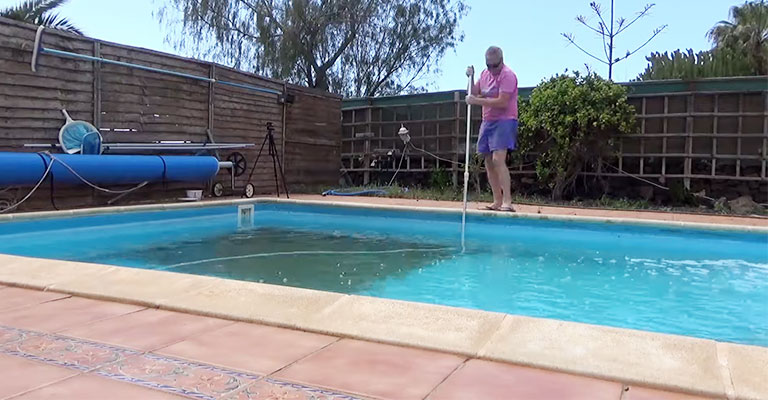
It is recommended to use either a pump and filter combination, a pool vacuum, or special equipment to remove debris from the pool’s bottom.
In contrast to the skimmer, which removes larger particles such as leaves and insects, sediment forms at the bottom when fine matter drifts there.
Swimming or the breeze can carry fine particles such as dust, sand, and dirt into a pool. To remove them, you will have to follow some other cleaning methods.
There are many ways to clean a pool. Here are some of the most common methods:
1. Automatic Pool Cleaners
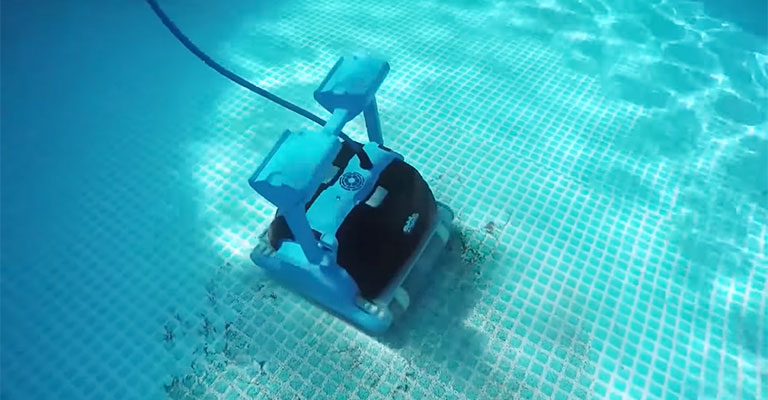
Dirty pools can be difficult to clean because they have a lot of debris and other hard or impossible substances to remove with conventional cleaning methods.
The only solution is using an automatic pool cleaner, which can help you get rid of all the dirt in the water without any effort on your part.
Nowadays, automatic swimming pool cleaners are robotic and completely autonomous. External power sources power these robotic cleaners. You can control some of them remotely from outside the pool.
Automated pool cleaners eliminate some of the work involved in removing fine debris from the water. Each type of automatic cleaner works differently.
Many of them are built to remove debris and deposit it into a pool’s filter; others are self-contained and filter water back into the pool.
2. The Backwash Method
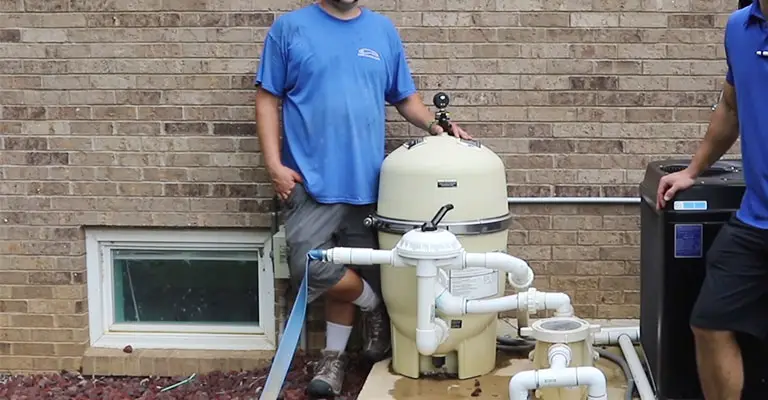
This debris is also collected and stored by a filter, which is busy removing debris from the water. However, it may become clogged over time, making it difficult for it to remove fresh particles from the swimming pool.
You can find leaf baskets nearby the skimmer flap to prevent debris from reentering the pool. Empty them and rinse them thoroughly.
Once the filter has been replaced, turn the filter setting to “backwash” and start the pump. The debris will be flushed out through the waste pipe.
Once the filter has been set to rinse, let the pump run for another minute or two. Last, clean out the leaf trap near the pump and rinse it.
Set the filter to close; The filter should be adjusted back to its original setting after replacing the leaf trap.
3. Brush The Walls
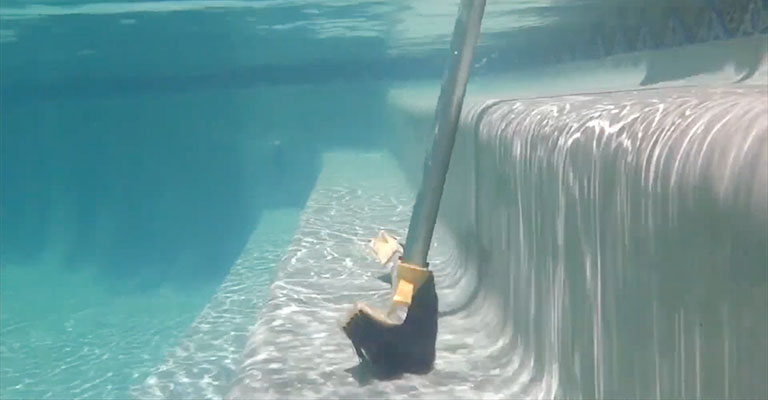
If you’re new to pool maintenance, you may not realize that you must scrub the walls with a stiff brush, even with water in the pool.
By doing this, the debris clinging to the walls of the pool is freeing up, enabling it to fall to the bottom and be removed.
When the swimming season is in full swing, brush the walls every week while the pump is turned off.
Remove the bottom debris with a vacuum after each brushing. A vacuum is used to clean the bottom of a pool by moving the vacuum head over debris till the bottom appears clean.
4. Pump and Filter
Fine debris is removed from the water by a pump and filter. Water is circulated through the filter using the pump, which removes fine particles.
Sand, diatomaceous earth, or zeolite are the most common types of filters, and they can remove fine particles and chlorine odors.
Typically, pool pumps run up to eight hours per day. Pumps and filters are effective at cleaning suspended and floating particles but may be ineffective at removing debris that settles at the pool bottom.
5. Invest In Algaecide
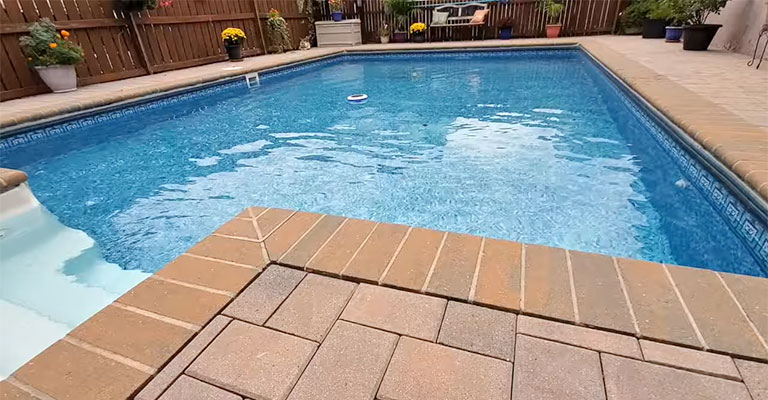
A pool’s algae are the biggest problem because they multiply so quickly it’s hard to keep up with them. Aquatic algae are killed by adding algaecide to the water, preventing them from growing again.
Using this method, the life process of the algae is interrupted, and photosynthesis is stopped so that it cannot multiply.
If you don’t allow algae to grow, you will notice a noticeable difference in the duration of your cleaning sessions. Furthermore, you don’t have to spend hours picking up dirt and other fine particles from the bottom of the pool.
6. Chlorine Kills
For the purpose of cleaning dirt from the bottom of a pool, chlorine is necessary. As a result of chlorine, the water remains clear by killing anything that makes its way into it.
Maintain a high level of chlorine in your pool by performing regular water tests and ensuring that you always add chlorine to your pool manually or by adding chlorine tablets.
7. Using A Shop Vac
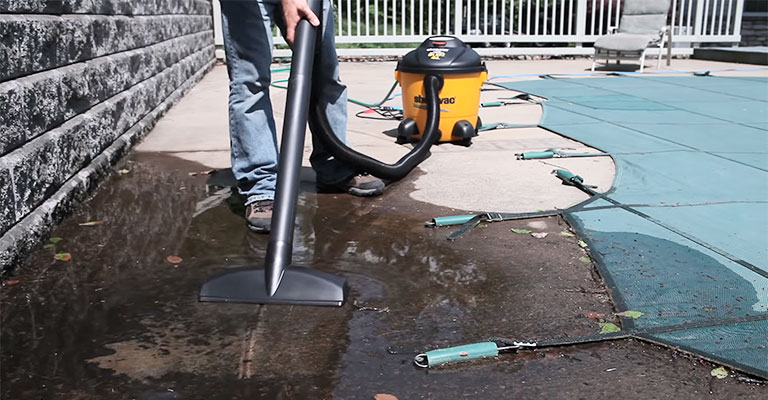
It’s not ideal for removing dirt from a pool’s bottom without a pool vacuum, but a shop vac and a garden hose can be used to create a pool vacuum. Use a wet/dry vacuum cleaner if you are going to use this method, or you may damage the vacuum.
When you don’t have a pool vacuum, use a Shop-Vac. This is one of the best tips we have for those without one.
Make sure to place your Shop-Vac as close as possible to the pool without falling into it. You should also remove any attachments that are attached to it, such as the vacuum head.
Hook up several pool hoses to your vacuum hose and tape them together. You can then tape the vacuum hose to the garden hose if it hasn’t been unraveled.
How To Remove Dirt From The Bottom Of A Pool By Using A Leaf Rake?
You have to get creative sometimes when it comes to pool ownership. Most of us keep leaf rakes in our sheds as garden tools, and they’re an excellent substitute for pool vacuums.
Make sure you only use a plastic rake so that the metal does not rip through the liner. Put the debris in a small pile with the plastic rake. After you have piled everything up carefully, you can scoop it up with a rake or pool net and throw it away.
What To Do If You Can’t Vacuum Dirt Out Of A Pool?
Getting rid of dirt from the bottom of a pool without a pool vacuum isn’t as difficult as you may have thought. You just need a skimmer and a pool net. Remove all the floating debris from the pool surface using your pool skimmer.
If you have anything in your pool that is lying on the bottom, attach a pool net to the pole and scoop it up. You may have to try a couple of times before the bottom of the pool is clean once more, but it is possible with a bit of persistence.
Balancing Your Water
You should test your pool’s water first before scooping out sediment. Pool owners should check pH levels twice or three times per week.
Thousands of things could be entering the water every single day since your pool is usually uncovered. You can get a pH tester from a pool supply store or other local stores that sells pH testers and test your water there to ensure that it is in a safe zone.
The pH level should be between 7.2 and 7.6. Adding chemicals will raise the pH if it is too low. You should lower the pH if it is too high.
In the normal pH range, bacteria and algae are less likely to grow, keeping your pool floor cleaner for longer periods and requiring less cleaning of green algae.
Why Does A Pool Get Dirty?
Pool maintenance seems to be an endless task. Over time, despite a strong filtration system and excellent chemicals from your pool supply store, small and large debris accumulate on the bottom and sides of the pool.
The importance of consistency with pool cleaning can’t be overstated. Every day, bacteria, dirt, and algae invade your swimming pool. A variety of algae grows in all bodies of water that are not constantly moving.
Despite your best efforts, algae will always find a way to grow in your pool. It doesn’t matter what you do, you’re constantly fighting to keep it out. Every time it rains, sediment gets into your pool.
As the wind blows across the water, dust, decomposing leaves, and animal droppings are carried along. It isn’t just people who make your pool dirty.
Every time you take a bath, you also release fats, ammonia, nitrogen, bacteria, and dirt into the water. Dirt from the bottom of a pool can build up for many reasons, so it is important to know how to remove it effectively.
How To Prevent Dirt From Getting Into The Pool?
The best way to prevent dirt from getting into the pool is to have a filter. A filter will automatically remove dirt and debris from the water when you have a filter.
We should use a filter when we are cleaning our pool because it will automatically remove dirt and debris from the water.
Filters are a great way to ensure that the water in your swimming pool is clean and safe.
They automatically remove dirt and debris from the water, so you don’t have to spend time cleaning after each swim. If you want to prevent dirt from getting into your pool, you need to do a few things:
- Keep the pool clean
- Keep the pool well maintained
- Keep the filter running
- Clean the skimmer
Final Words
The summer months are the best time to have a pool. They keep us cool during the blistering hot days and make hours outside seem like minutes of endless fun.
When you keep your pool clean and free from dangerous particles, you can get the most out of your summer as a homeowner.
When you don’t have a vacuum cleaner, removing dirt from the pool bottom is a little more difficult. There are, however, many ways you can eliminate fine dirt from your swimming pool without having to spend a great deal of money.
Take a few tools from your garage or garden shed, and you’d be surprised at the amount of debris you can collect with them.
Look through the list provided here for alternate cleaning methods to make the bottom of the pool free of all sediment if you’re looking for innovative ways to clean the bottom of your pool.






